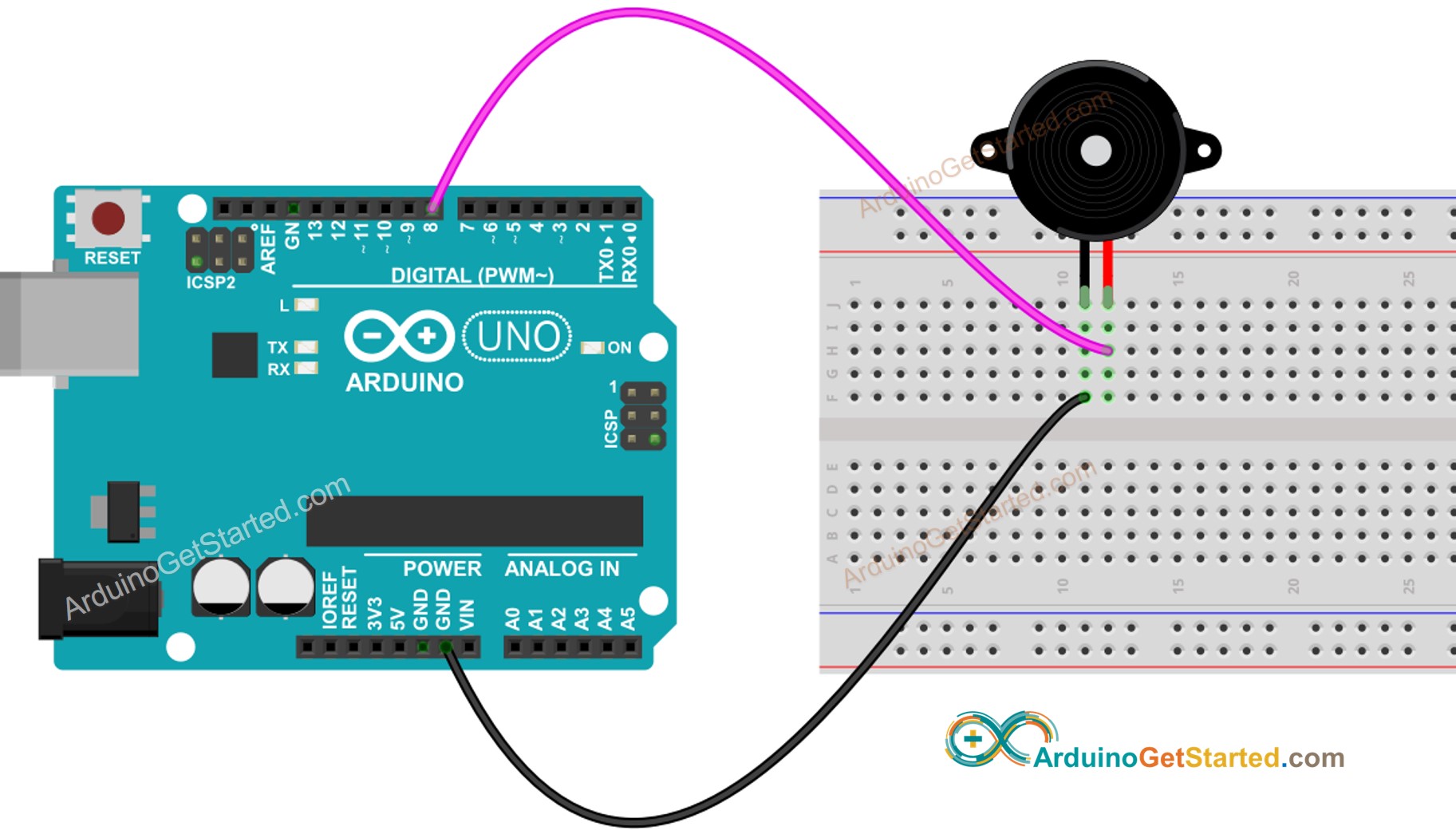tone()
Descrição
Gera uma onda quadrada na frequência especificada (e duty cycle 50%) em um pino. A duração pode ser especificada, do contrário a onda continua até uma chamada de noTone(). O pino pode ser conectado a um buzzer piezo ou outro speaker para tocar tons.
Apenas um tom pode ser gerado de cada vez. Se um tom já está tocando em um pino diferente, a chamada de tone() não terá efeito. Se o tom está tocando no mesmo pino, a chamada irá mudar sua frequência para a nova especificada.
Uso da função tone() irá interferir com saída PWM nos pinos 3 e 11 (em placas diferentes do Mega).
Não é possível gerar tons de freqeuência mais baixa que 31Hz. Para detalhes técnicos, veja as notas de Brett Hagman's(Em Inglês).
Sintaxe
tone(pino, frequência)
tone(pino, frequência, duração)
Parâmetros
- pino: o pino do Arduino no qual gerar o tom
- frequência: a frequência do tom em Hertz - unsigned int
- duração: a duração do tom em milissegundos (opcional) - unsigned long
Retorna
Nada.
Código de Exemplo
Let's to play "Jingle Bells" song with Arduino.
Hardware Required
Additionally, some links direct to products from our own brand, DIYables .
Wiring Diagram

This image is created using Fritzing. Click to enlarge image
Arduino Code
For more detailed instruction, see Arduino - Piezo Buzzer
※ Notas e Advertências:
Se você quiser tocar tons diferentes em múltiplos pinos, você precisa chamar noTone() em um pino antes de chamar tone() no próximo pino.
Ver Também
- Linguagem : noTone()
- Linguagem : pulseIn()
- Linguagem : pulseInLong()
- Linguagem : shiftIn()
- Linguagem : shiftOut()
- Exemplo : Arduino - Piezo Buzzer
※ ARDUINO BUY RECOMMENDATION
| Arduino UNO R3 | |
| Arduino Starter Kit |
